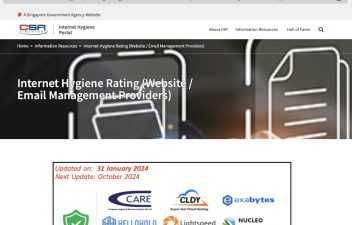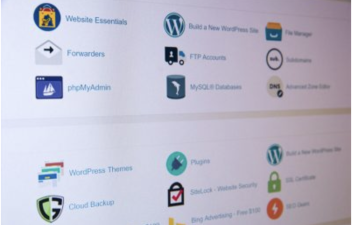Anyone and everyone that uses email know just how insidious a problem spam emails are. These are simply unwanted advertising messages, but sometimes they are far more malicious, such as scams or phishing attempts. The typical user may receive at least a couple of these unwanted emails per day. Still, they mostly go unnoticed as they automatically get filtered out by their email service provider.
However, if even that system is not enough and you get substantially more solicitation or marketing spam emails in your inbox, you have a problem. Thankfully, there is a way to put a stop to this issue. Before that, let us understand the root cause of why your inbox is suddenly getting flooded by spam emails in the first place.
 Photo by Lindsey LaMont on Unsplash
Photo by Lindsey LaMont on Unsplash
Why you’re receiving a lot of spam emails?
The first and most obvious reason people get spam emails is that they voluntarily divulge their email addresses. In most cases, you have willingly given out your address to someone at some point, and they have either followed up with you directly, sold that information, or both.
Here are four of the most common situations wherein you may have exposed your email address, intentionally or otherwise:
- Making an account on an app or website
Virtually every app or website these days now requires users to create an account and sign up with their email address before they can access its services or features.
However, the need for this registration process shows that nothing ever comes with no strings attached in today’s world. Companies profit from their free services by using (or selling) user data for advertising purposes.
- Signing up for newsletters, free products, or samples
Like signing up for an app or site, you may have provided your email in exchange for a product sample or demo for a service or subscribed to the newsletters of your favourite brands.
- Purchasing products online
Purchasing online generally involves providing your email address despite not needing to create an account with the e-commerce site. When doing so, it is best to be wary of the company’s reputation and read up on its privacy policy to learn how and under what circumstances they intend to use your data.
- Compromised email databases
Companies affected by cyber incidents like data breaches mean hackers have stolen their corporate data, including their clients’ user information such as email addresses. Given how this is a risk every internet user must take, it is essential to be cautious about which companies you share your email with.
Moreover, it is recommended to periodically visit haveibeenpwned.com to check if your email has been exposed. If it has, change your passwords as soon as possible, especially if you use the same passwords for multiple websites and accounts.
How to stop spam emails from flooding inboxes and avoid them?
Rooting out the incoming flow of spam emails will need some time and effort. Thankfully, once you accomplish the following steps, your inbox should become much more manageable than before—especially if you are mindful of the tips and potential pitfalls detailed below.
1. Unsubscribe from emailing lists and use a disposable address
Fixing your spam email issue starts with stopping all unwanted emails from companies you do not engage with. Do keep in mind that this could have undesirable consequences as clicking ‘unsubscribe’ links confirms that you provided a working email.
Thus, be careful with this step and opt out of email lists. Do this diligently, and you can significantly reduce the number of spam emails you receive.
Once you have accomplished this step, please pay attention to whom you share your email address in the future and refrain from giving it out indiscriminately and without a legitimate reason.
Furthermore, it may be best to create a secondary or ‘disposable’ email account when you cannot fully trust a website or app but still wish to access what they are offering.
2. Mark spam emails as junk mail
Use your email service provider’s tools to mark those emails you cannot unsubscribe from as unwanted spam emails. A simple online search should let you know how to do this step for your preferred email platform.
After you are done, the senders of said emails will be included in a list of “banned” addresses from which your inbox will no longer accept messages.
3. Use a third-party spam filter
Despite having an anti-spam filter already, pairing it with another third-party solution can offer an extra layer of cybersecurity. In this way, messages addressed to you must go through two spam filters before reaching your inbox.
If a spam email manages to slip past the first filter, the second should be able to catch it and vice versa.
4. Change your email and upgrade your email provider
Switching to a brand-new email address lets you have a clean slate. Due to how drastic this step can be, it is only a last resort option when you are entirely overwhelmed by spam emails.
Just note that if you used your previous email for various accounts, that means having to update them with your new email, informing your contacts about your new address, and more.
Lastly, if you have decided to go down this route, take it as an opportunity to upgrade your email provider since all of them are made equal.
Gmail or Microsoft are good free email services to choose from with a reputable standing. Still, you can also opt for paid email services that offer more features and greater security.
Conclusion
Unwanted spam emails are not just annoying, but they could also pose a risk to your digital security. Since there is yet to be a ‘do not email list for spam’ feature, you are still the best and the first line of defence when protecting your email.
Suppose your business needs a robust web and email hosting solution. In that case, CLDY has you covered with our best cloud hosting services, including email hosting services, VPS hosting, business web hosting, and more.
Our cloud solutions are unparalleled in speed, reliability, and security—essentially everything your business needs to grow and succeed, all at no risk.










